Physical Address
304 North Cardinal St.
Dorchester Center, MA 02124
Physical Address
304 North Cardinal St.
Dorchester Center, MA 02124
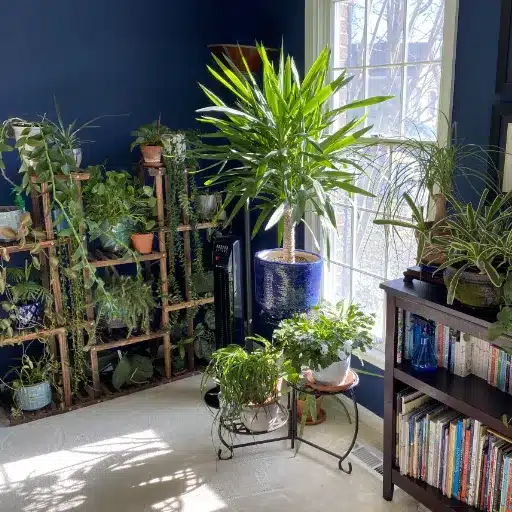
Houseplants can make your home a green and airy sanctuary, and at the same time, they can contribute to your well-being. On the other hand, the majority of plant lovers—whether new or experienced—still hold their ground when it comes to struggling plant issues like dropping leaves, browning tips, or dying plants, even after taking the utmost care of them. This guide is a lifesaver! “The Ultimate Guide to Houseplant Care” is the ultimate help in your quest to learn how to grow indoor plants successfully. If you intend to perfect your watering methods, set up the ideal lighting, or deal with common problems such as pests and diseases, this article will provide you with practical tips and professional advice to keep your plants not only alive but also thriving. The time has come to add life and energy to your indoor areas—your houseplants will be grateful!

Indoor plants are plants that live in a sheltered environment, such as inside people’s homes, offices, or other areas. These plants are usually selected based on their capacity for coping with low-light situations and indoor climate. The most common examples of indoor plants are: pothos, spider plants, and peace lilies. These plants are not demanding; they only need proper watering, moderate feeding, and light to stay alive. Locating the plants correctly, providing them with moderate temperatures, and regularly checking the moisture level in the soil are the main factors for their success. The use of indoor plants in your home not only makes the place more attractive but also contributes positively to the indoor environment by improving air quality.
A houseplant refers to a plant that is taken care of inside a building and is normally grown for the purpose of beautification or improving the quality of air and the general comfort of a home or office. The selection of houseplants usually depends on their ability to live under indoor conditions, which may include limited light and humidity, and they may be flowering or non-flowering plants. In addition to their attractive appearance, indoor plants also create a picturesque, soothing, nature-like atmosphere in the interior.
Indoor plants are a source of numerous advantages that improve the living and working environment. To begin with, they are the natural air purifiers since they perform the important task of removing harmful substances from the air and at the same time, producing oxygen, thus making the indoor spaces healthier. Furthermore, by bringing nature indoors, they reduce stress and anxiety and even improve mental health. Also, their installation raises the humidity in the air, which is good for skin and lungs, especially in dry climates or during winter when the air is usually very dry. Besides, they are pleasing to the eye and thus make a space more welcoming and lively. To sum up, houseplants act in a dual way, i.e., they are very useful and at the same time, they are very nice to look at, thus, one can easily say that they are indispensable additions to indoor places.
If you want to know what the best indoor plants for beginners are, the focus should be on low-maintenance, robust, and easy-to-care-for varieties. Snake plants, also called Sansevieria, are an amazing choice because they are very tolerant of low lighting and a lack of water. Another plant that is perfect for novice gardeners is the spider plant; it’s very adaptable and doesn’t need much care. The pothos, or “Devil’s Ivy,” is often praised for its versatility to grow in both bright and low light, as well as for its forgiving nature concerning watering. Peace lily is no longer a beautiful plant but at the same time, it has the ability to cleanse the air; however, it does need to be watered regularly. These plants are very forgiving to beginners in the field of indoor gardening; they give a nice mix of beauty and strength while requiring very little effort.
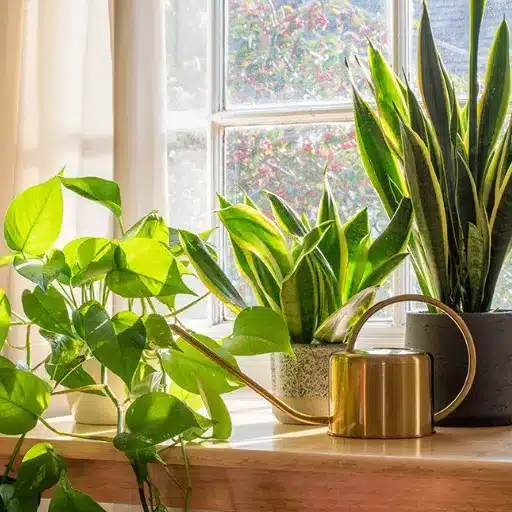
In order to keep houseplants in good condition, the spotlight should be on three main aspects: light, water and soil. Position your plants where they want their light, for example, most leafy varieties like bright, indirect light. Only water your plants when the top inch of the soil is dry because overwatering is a mistake that most people make. Use the right well-draining potting soil for your plants and also make sure that the pots have drainage holes to avoid root rot. Plants usually shed yellow leaves—do it regularly, and also take care of cleaning the dust off the plant to let it grow and keep sprucing up its look. It is a good idea to change care routines with the seasons, and plants will probably drink less water during winter.
Indoor plants’ watering needs depend on the particular plants and the environmental conditions they are kept in. The best way to tell whether watering is required is to check the soil moisture by sticking your finger into the top inch. Only water if it feels dry to prevent overwatering, which can lead to root rot. Over the duration of a plant’s life, the watering amount and frequency will vary according to the plant type, pot size, and indoor climate, as well as seasonal changes, with winter being the time when generally fewer waterings are necessary. Always make sure your pots have good drainage, and use well-draining soil to root healthy plants. Keeping a constant watch and changing your routine accordingly will ensure the success of your plants.
Houseplants’ light requirements differ according to their species. Low-light plants, such as pothos and snake plants, prefer indirect light and can even endure corners with little natural light. Medium-light plants like peace lilies and calatheas require bright, indirect sunlight and should be positioned east- or north-facing windows. Highlight plants such as succulents and fiddle-leaf figs need several hours of direct sunlight every day and are best placed in south- or west-facing windows. Keeping an eye on your plant’s condition like leaf color changes or stretching, will guide you in repositioning their placement to coincide with their light need for maximal growth.
When it comes to selecting the right pot for your plants, it is important to take into account aspects like size, material, and drainage. The pot must be the right size, allowing for root growth but not so big that the soil retains too much moisture, which causes root rot. Terracotta and other breathable materials are good for plants that like dry conditions, while plastic pots, which do not allow much moisture to escape, are good for plants that love humidity. Drainage holes are key for avoiding waterlogging; thus, always make sure the pot has a way for the excess water to escape. Matching the pot to the specific plant’s needs will result in wonderful growth and long life.
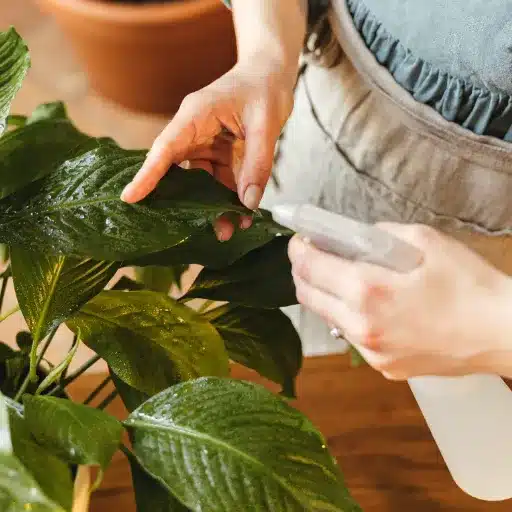
Watering
The well-being of the plants is highly dependent on proper watering. When the uppermost inch of the dirt is dry to the touch, that is when water should be applied. Root rot can be a consequence of excessive watering, while the opposite may lead to wilting. Influence the regularity according to the plant’s species and the period, since there are those that need less water in the dormant phase.
Light
Position the plant at a place that satisfies its illumination needs. Most indoor plants like bright but indirect sunlight whereas, in the case of cacti and succulents, direct sunlight is the best. If the light is very low, going for pothos or snake plants would be a good idea.
Fertilization
During the growth period of the plant, which is usually spring and summer, feed it with a balanced fertilizer. To prevent root damage caused by over-fertilization, adhere to the dosage and schedule indicated on the product label.
Pruning
Cutting off regularly, dead or injured leaves, will result in the plant getting healthier. If you are growing vine plants, cutting back long shoots will help keep the desired shape and size. Always use tools that are clean and sharp to minimize the chances of infection.
Repotting
A repotting is necessary when the roots of the plant take up all the space in the container, which usually happens in 1-2 years at most. A pot just a size up from the present one should be chosen and soil refreshment is to provide nutrients that the plant requires.
Snake plants are very easy to take care of and even thrive with basically no care at all. Water them once in a while, let the earth dry up totally before watering again, because excess water can cause the plant to rot at the roots. The snake plant should be placed in a spot with a lot of indirect sunlight, though it is still able to live in conditions of low light. The soil that is not able to retain water should be used, and fertilizers should only be applied during the growing season, about once a month, using a balanced houseplant fertilizer. Cutting away damaged or dying leaves will allow new healthy growth in their place; also it is a good practice to repot every 2 or 3 years if the roots fill the pot. Snake plants are durable and tolerant, which makes them a good option for novice gardeners.
Pothos plants are nearly the same as low-maintenance and can survive in different conditions, thus they are the perfect plants for both the inexperienced and the expert plant lovers. They like to be in a place where there is a lot of bright, indirect light but can also survive in a low-light area. Do not water the pothos plant until the top layer of the soil one to two inches thick is dry, since giving too much water will lead to root rot. Using potting soil that has good drainage and is suitable for indoor plants is a must. To fertilize during the plant’s active growth period, which is spring and fall, the plant should be given houseplant fertilizer once every 1 or 2 months. Cut the plants as needed to keep them in size or shape and also to get rid of the yellowing leaves. Pothos plants are easy-going and adaptable, thus they can easily fit into any indoor decor.
Succulents and cacti need a lot of sun, but not direct, and must be planted in soils with good drainage to be able to remain rot-free. Water these plants very little, but let the soil dry out completely when the next watering is done; otherwise, you will be giving them too much water, and this is a common problem. During the growing period, which is mostly in spring and summer, monthly fertilization should be with a diluted, low-nitrogen fertilizer. Only prune if necessary to get rid of dead or unwell parts; otherwise, repot when the plant fills its pot, which usually takes 2 to 3 years. These tough plants are low-maintenance and perfect for people who want a dazzling and yet unnoticed plant indoors or outdoors.
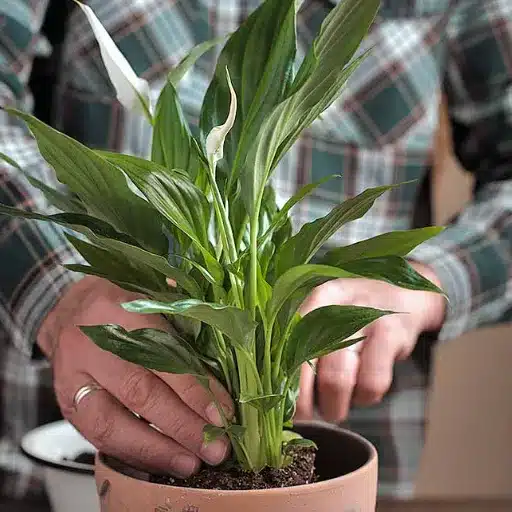
Overwatering
Overwatering is the primary problem faced while taking care of houseplants. It can result in root rot, yellow leaves, and a sick plant. When the top inch of soil is dried up, then only water the plants and also make sure that soil has good drainage.
Underwatering
Underwatering causes plants to have wilted leaves, very dry soil, and slow growth. To avoid this situation, apply the method of watering schedule and keep checking soil moisture.
Poor Lighting
Plants can suffer from the wrong amount of light, whether that is not enough or too much. Low light usually shows through yellow leaves or leggy growth, whereas, in the case of too much direct sunlight, plants will have scorched or curled leaves. Change your plant’s location to better suit its light requirements.
Pest Infestations
Plants can be damaged by pests such as spider mites, aphids, or mealybugs. Follow-up on leaf inspections regularly, especially the ones done on the undersides, and very quickly deal with infestations through insecticidal soap or neem oil.
Nutrient Deficiency
A nutrient deficiency may be detected by signs like pale leaves or weakening of the plant. Use a balanced fertilizer when plants are growing as the best way to keep them healthy, but make sure to not over-fertilize as that could harm the root systems.
The first signs that a plant has been receiving too much water are the yellowing of leaves, wilting even when the soil is wet, and the entire plant looking limp or droopy. In addition, the roots may rot to the point of producing a bad smell, and the soil is likely to stay wet or even swampy. To counter this, move the plant to a spot with good drainage soil and apply watering less frequently, letting the first layer of soil dry before the next watering. Thus, it is essential to provide proper drainage and check soil moisture to prevent overwatering and ensure that the plant remains healthy.
Pests can be a considerable problem for the health of plants but they can be managed if you care for your plants properly and pay attention. Plants are often infested by common pests like aphids, spider mites, and mealybugs that feed on them which results in damage of leaves, stems, and reduced overall growth. Once you detect such problems, inspect your houseplants regularly for the first signs of infestation – discolored leaves, webbing, or sticky residue. If you find parasites, you can either eliminate them by hand or apply natural cures like neem oil or insecticidal soap. Ensure the plant gets all the care that’s needed, such as good air flow and no overwatering, as strong plants are less taken by pests. Regular observation and fast response are very important factors in keeping pests under control.
If a plant shows signs of slowed growth, yellowing leaves, or protruding roots through the drainage holes then it needs to be repotted. Besides, the other indications are that watering had quick absorption by the soil or the plant had become top-heavy and unstable. Also, if the soil looks compressed or drained of nutrients, repotting can be a benefactor or rejuvenator of your plant. Fund a pot that is larger only slightly and get fresh soil that is rich in nutrients to give your plant the space and resources it needs to flourish.
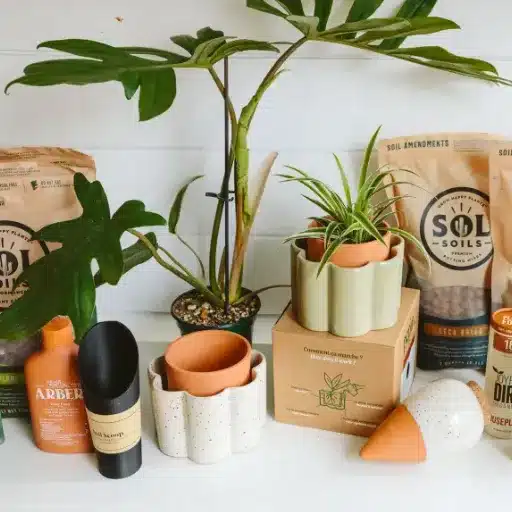
The propagation techniques for indoor plants might differ depending on the species, yet the most commonly used are stem cuttings, leaf cuttings, division, and water propagation. The stem cuttings method consists of cutting a healthy stem under a node and placing it either in water or soil until the roots are formed. Leaf cuttings are ideal for succulent plants; a single leaf can grow roots when it is laid over the moist soil. Division is useful for plants that consist of many stems or clumps, by splitting the plant into smaller parts and then putting them in separate pots. Water propagation is a very easy technique, where one cuts a plant and puts the cut stem in a jar of water, and roots will develop in a visible way before being moved to the soil. Each technique needs the same amount of time and care to make sure the growth is successful.
For the propagation of pothos, first, choose a strong and healthy vine with a few leaves and at least one node, as these are the places where the roots will grow from. With very sharp, clean scissors, cut just below the node and make sure you have a cutting of 4-6 inches long. Cutting near the bottom of the stem will make it easier for the roots to form, so removing any leaves is a good idea. Put the cutting in a water container, make sure the node is underwater but the leaves are still above water. Place the container in a spot where there is no direct sunlight and change the water every few days to keep it fresh. When the roots are about 2-3 inches long, usually in a few weeks, transfer the cutting to soil and water regularly. If you provide the right conditions, the pothos will grow big and healthy as well as continue growing.
Propagation of succulents and cacti is easy and can be done with leaf, stem or offset cuttings. If you do leaf propagation, just twist off a leaf from the plant, and dry it for a few days until it forms a callus, ensuring that it detaches cleanly. When calloused, place the leaf on good-draining soil and lightly mist it sometimes till roots and small plantlets appear. For stem cuttings, take a piece of the stem using sterile tools, let it callus for several days, then put it in soil and water it very little till it is established. Offsets—tiny clones that appear at the base of the plant—can be cut off, let to callus and then planted. It is very important to give them indirect light and little water during the first stage because that is when they are most vulnerable.
Almost all the time, the successful propagating of plants is determined by the precise moment, place, and care given. Always make use of clean, sterile tools so that no disease gets transmitted and also make sure the propagation medium is fresh and suitable for the plant type no matter if it is soil or water. Light that is bright but indirect is needed for the plant to grow and it should also not be the direct light that could cause stress to the cuttings or offsets or dry them out. The watering needs to be consistent; that is, if there is too much water then the plant will rot, and if the water is too little then the roots will not develop. Patience is the key factor because in the case of some plants it will take longer for rooting and others to be established. It would be wise to keep track of changes in the plant’s growth and then alter the care given so that the best conditions for vigorous growth are set up.
For the most part, houseplants require light, water, soil, and air as their basic needs. There are different species that have different light needs, such as some that like bright, indirect sunlight, while others prefer low-light conditions. The same goes for watering; there are plants that need watering every day while others only after a week or so, thus it is necessary to know the watering and light preferences of your plants beforehand so that you can avoid overwatering or underwatering them. Another important factor is soil type, where a well-draining potting mix is mostly recommended. Furthermore, houseplants need the fresh air for photosynthesis, so it would be a great help if you rotate them sometimes so that they can grow evenly.
The watering frequency varies considering the houseplant type, season, and environmental conditions. Checking the top inch of soil is a common practice where if it feels dry then it’s time to water the plant. The incorrect amount of water is a mistake that occurs quite often, so be sure that the pot has drainage holes to let the water out and thus prevent it from collecting at the bottom. During winter, many houseplants go through a dormancy period so they require less water. Always watch your plants closely for distress signs, like yellowing leaves, which may mean you’re either giving too much water or not enough.
Houseplant soil of the best quality usually comprises a well-draining potting mix that not only holds but also supplies air and nutrients. For many plants a standard potting mix would be just fine, but for cacti, succulents, or orchids you might need the special kinds. In the case of example, cacti do well in a gritty mix that retains no moisture at all, while orchids flourish in bark-based mixes which allow for ample drainage. And it’s also good to think about incorporating perlite or vermiculite for better aeration. And do check that the soil you pick meets the particular demands of your houseplants.
You can easily tell if a particular houseplant is receiving enough light by observing its growth and general health. A probable reason for the plant reaching out for the light could be that it is lacking light. On the contrary, if the leaves are getting burnt or there are brown spots at the edges, then the plant might be getting too much light. Besides, healthy growth, bright leaf color, and flowering (if relevant) are indicators your plant is satisfied with its lighting conditions. If you are uncertain, you might consider using a light meter for more accurate readings.
In case you find out that your houseplant has pests on it, it is very important that you take action quickly in order to prevent any kind of damage. Start by separating the infested plant from the rest of your plants, already to keep the pests from spreading to your other plants. Studying the leaves and stems very closely might help you figure out what kind of pests they are, for example: aphids, spider mites, or mealybugs. The easiest way to get rid of these pests is by washing the plant with a gentle stream of water, insecticidal soap, or neem oil often times will also kill the pests. Pest infestations can be avoided by regularly inspecting your plants and carrying out proper care routines.
Providing the right conditions specific to each plant will be the main factor to convincing your houseplants to bloom. Adequate light is a major requirement for many flowering plants; therefore, ensure that the plants receive proper bright, indirect light. The composition of nutrients is equally critical and the use of a balanced fertilizer during the growing season can lead to tropical blooms. Moreover, ensure the proper watering and humidity levels because stress can prevent flowering. Some plants might need a rest period or certain temperature conditions that signal blooming; therefore, it is best to do thorough research on your particular species for best results.